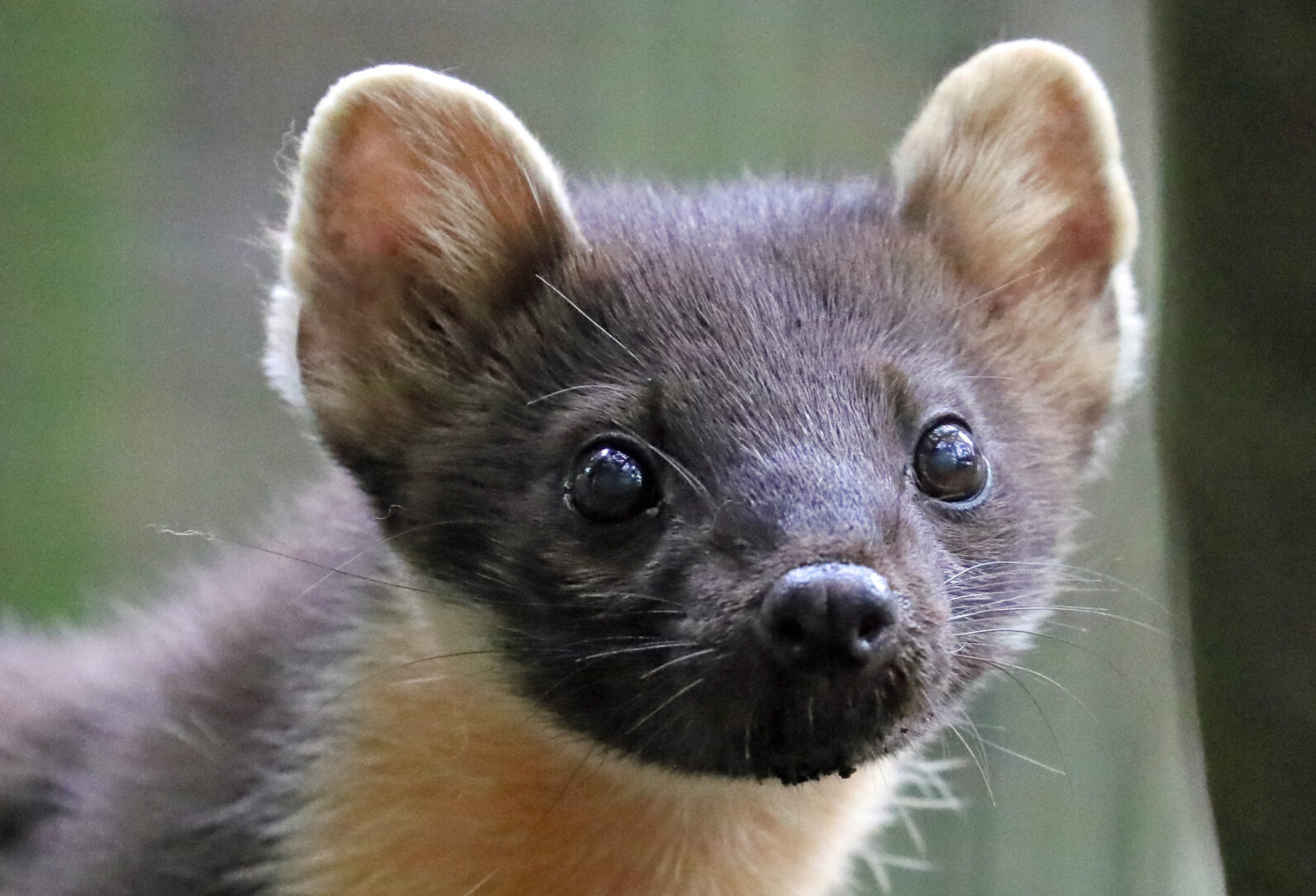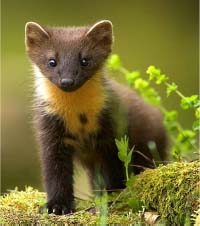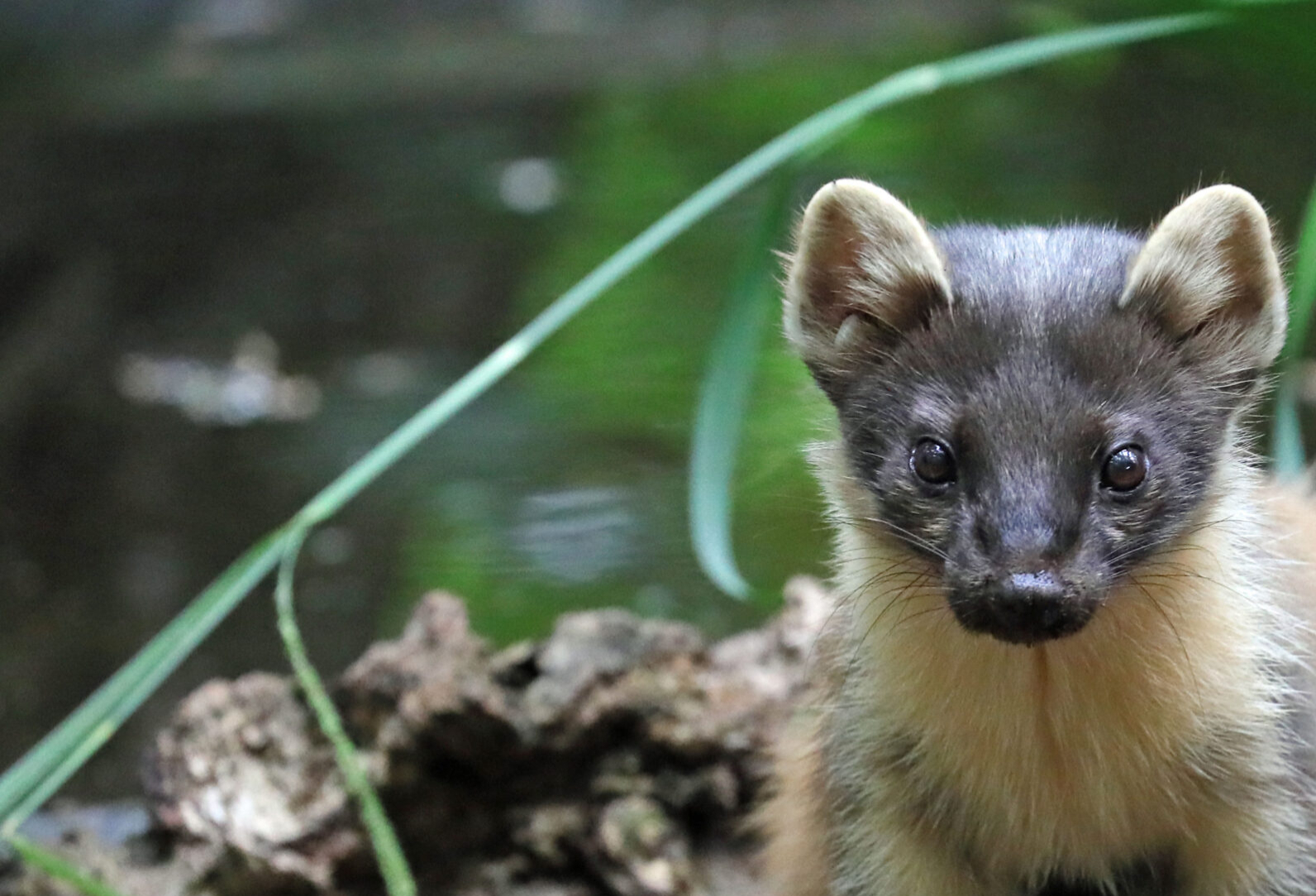During the Mesolithic era (9,000 – 4,500 BC) the pine marten ( Martes martes ) was Britain’s most abundant carnivore with numbers estimated at almost 150,000 with the post-ice-age archipelago being almost fully wooded.
These vast connected forests are often referred to as the prehistoric ‘Wildwood’. However, today pine martens only number 3,700 in Scotland and 2,700 in Ireland. They are almost extinct across England.
Their first major persecution came with the passing of The Preservation of Grain Act, signed by Henry VIII in 1532 making it compulsory for ‘every man, woman and child to kill as many creatures as possible that appeared on the official list of vermin.’ They were finally almost completely wiped out by gamekeepers in the early 20th Century.
Pine martens (group name: ‘a richness’) are members of the Mustelids which include weasels, badgers and otters – a globally successful family of species occupying many different niches – otters: aquatic, badgers: burrowers, pine martens: arboreal.
The reintroduction of pine martens can help regulate populations of small mammals. Rodents sometimes experience population explosions, leading to negative impacts on habitats and agricultural land. Through predation pine martens act as natural pest controllers, helping to maintain a healthy balance. This method is far healthier than using harmful pesticides and rodenticides which can have wider polluting effects on ecosystems.
Pine martens play an important role in woodland seed dispersal by inadvertently carrying seeds in their fur. This dispersal mechanism promotes the establishment of new vegetation and enhances biodiversity.
The presence of pine martens can have a positive impact on bird populations. As skilled double-jointed climbers, they often create tree cavities to use as den sites. Once abandoned these nesting spots are popular among owls, woodpeckers and various songbirds.
Red squirrels (Sciurus vulgaris) have been severely impacted by the introduction of non-native grey squirrels (Sciurus carolinensis) which took place across southern Britain in the 1870s. Greys outcompete reds for resources and carry a deadly pox virus (Parapoxvirus) which they are largely immune to but reds are not. Pine martens are natural predators of greys and can help control their populations creating a more favourable environment for red squirrel populations to recover.
The presence of apex predators like pine martens has a cascading effect on the entire food web. They can influence the behaviour and distribution of prey species. This can result in changes in the feeding patterns of herbivores, altering their browsing and foraging habits as they become more skittish and afraid of predation thus moving on before consuming more seeds/saplings. Consequently, vegetation dynamics may shift, leading to a more diverse and balanced ecosystem following positive trophic cascades.
The reintroduction of pine martens can also bring economic benefits through wildlife tourism. Pine martens are charismatic creatures, attracting nature enthusiasts and tourists who are eager to catch a glimpse of these elusive mammals. Increased tourism can generate revenue for local communities and encourage conservation efforts in the long run. Nature-based tourism has the potential to support sustainable development and provide economic incentives for the conservation of natural habitats.



